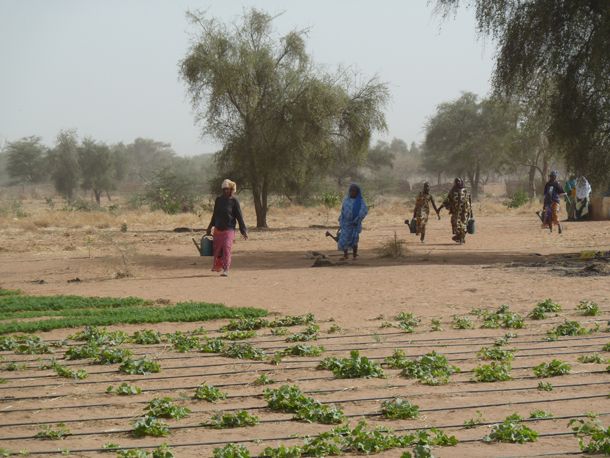Widou is a village in the north of Senegal, near the border with Mauritania. It’s built around one of the deep wells French colonists constructed at regular intervals. Water is life in this region, where the dry season lasts for 8 to 10 months. The sandy soil supports little vegetation--some dry grass and a few stringy acacia trees with large flat crowns. And as the desert spreads, even these are dying.
But the Great Green Wall can bring hope to people in hamlets like Widou. The project started here in 2008, and now waist high bushes sprout between the flat-topped trees. The Senegalese government hopes this will one day become a forest, but their first task was to persuade the people who live here to support the project.
This was not easy, because the Peuhl, the dominant ethnic group of the Senegalese Sahel, were nomadic pastoralists. They are tall and elegant; the women wear long silky dresses and headscarves, and often have blue tattoos on their lower lip and chin. The men wear long, straight robes of emerald green and sapphire blue. Traditionally they migrated with their herds of goats and cows to shifting water sources, but now they make a daily trek to the well instead.
To convince this traditionally nomadic people to plant the wall of trees to turn back the desert, the government first persuaded them to plant carrots. Now the communities, especially the women, are planting gardens. Instead of traveling more than 30 miles to market for fresh vegetables, they harvest their own much closer to their homes. Of course, coaxing vegetables like cabbages, tomatoes, onions, even watermelons, out of the dry sand, is no easy task. But there’s an endless supply of manure fertilizer and water from the well, and they seem to be making it work.
